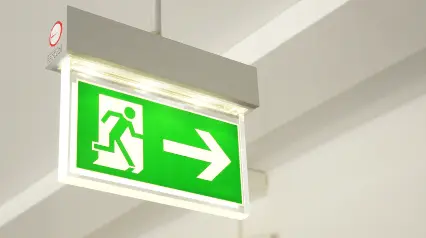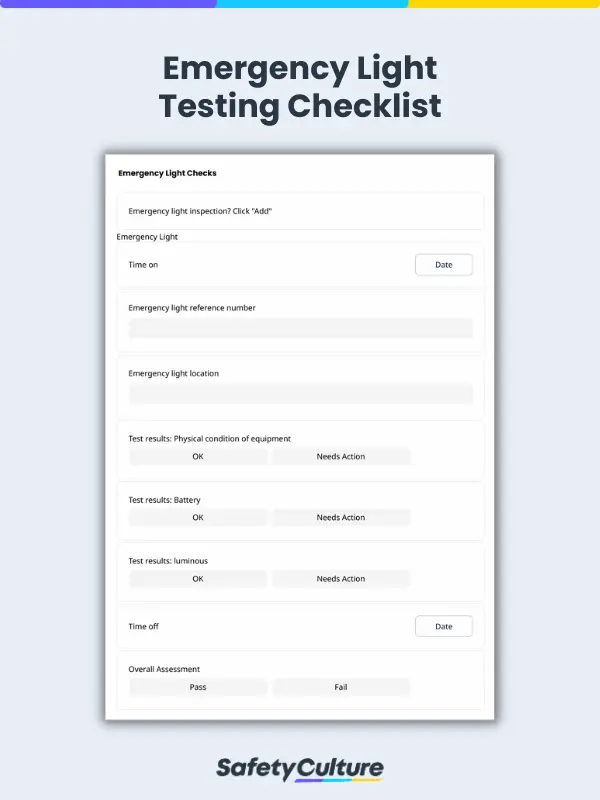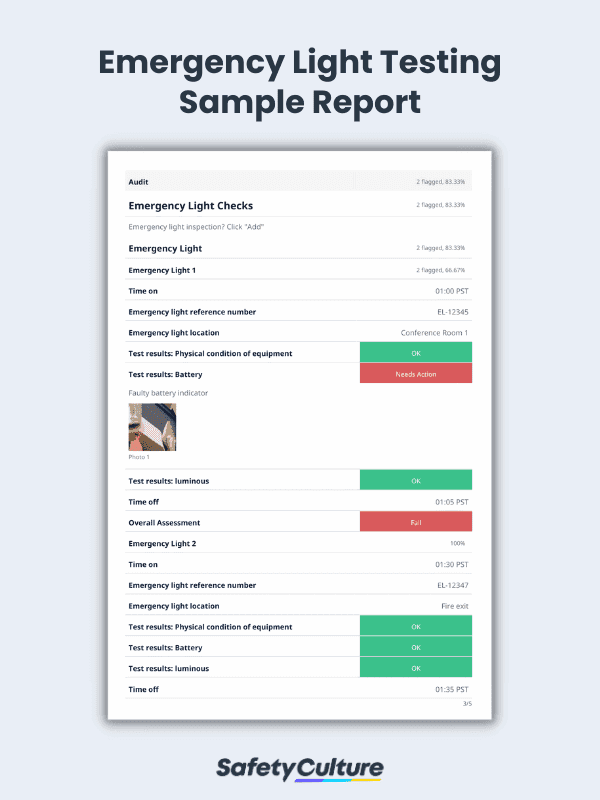What is Emergency Light Testing?
Emergency light testing assesses a building’s emergency lighting system if they work properly and comply with local and national safety standards. This testing happens on a regular basis to ensure the lighting system functions as intended—that is, to provide illumination during power outages and emergencies.
Why Should You Perform This Test?
Emergency lighting is often overlooked when considering building occupant safety. In the event of power outages, darkness, disasters, or emergencies such as earthquakes or fires, these lighting and exit signs are crucial because they help occupants navigate safely, remain calm, and evacuate quickly.
Over time, these emergency lighting systems can become less effective due to dirt, dust, wear and tear, and other factors. And when this happens, they may fail to function properly. Thus, to keep emergency lights in optimal condition, they must be tested regularly.
Emergency light testing is key to maintaining the performance of emergency and exit lights. This test helps identify any defect or malfunction in lighting systems so that building operators can address them before they become a problem. Consequently, this can help occupants safely exit the building when needed.
Not only does this test help avert safety risks to occupants, but it also allows establishments to comply with local and national regulations. For example, emergency escape lighting is a legal requirement for all buildings in the UK and part of the Regulatory Reform (Fire Safety) Order 2005.
How to Conduct Emergency Light Testing
According to the National Fire Protection Association (NFPA), it is ideal that emergency light testing is done once every 30 days. To do this, press a small “push to test” button that should light up the signs for 30 seconds while maintaining the same level of brightness. A thorough emergency lights inspection should also be performed annually to confirm that the lights would stay on for at least 90 minutes as necessary.
Emergency lighting should be tested and reviewed by qualified technicians who have an extensive understanding of UK emergency lighting regulations. In addition, a typical emergency light testing procedure is conducted as follows:
- Notify occupants about emergency light testing. Ensure occupants are made aware of the upcoming darkness simulation to avoid panic and injuries.
- Identify the emergency lights in the building. All units generally have a red or green LED glowing on them.
- Insert the test key into the key switch adjacent to the unit. Make sure the emergency light fitting illuminates once the key has been inserted.
- Switch off the relevant lighting circuit at the distribution board. Ensure emergency lights illuminate automatically once power is cut off.
- Log all units that are not working. Use emergency lighting log books and test sheets to record identified defects.
What to Include in Your Checklist
Part of keeping emergency lighting systems functional involves regular tests and inspections. All detected failures must be remediated as soon as possible, and all results recorded. To speed up the process, technicians and maintenance inspectors use emergency lighting checklists, log books, and test sheets.
These recordkeeping tools must capture the following information:
- Equipment identifier and testing times
- Visual and physical condition of the equipment, battery, and luminous
- Any physical defects found
- Assessment of test results (pass or fail)
- Reasons for failure
- Recommendations
- Inspector’s signature and timestamp for validation
Here’s an example of an emergency light testing report for your reference:
Best Practices for Emergency Lighting Tests
Aside from using checklists and test sheets, here are 5 tips to maximize your emergency light testing activities:
- Determine the right test for your needs – A functional test checks if your emergency lights turn on when needed, while a duration test (also known as a full-discharge test) measures how long these lights will stay on during a power outage.
- Schedule regular tests – Start with simple lighting tests at short intervals every month. Then, run a comprehensive full discharge light testing every year to observe how your emergency lighting system will work under more realistic circumstances.
- Use the correct testing equipment – Check if the testing equipment is calibrated on a regular basis to ensure it will provide accurate results.
- Perform tests during non-business hours – Not only will it minimize disruptions to building occupants, but it will also make the testing process more realistic.
- Test in different areas of the building – Doing so will verify if the entire lighting system is functioning properly and narrow down any place or issue that requires attention.
Emergency Lighting Testing FAQs
Emergency light testing typically falls under the responsibility of building operators and safety officers, but any “competent” person can carry out this task. This person will run daily, monthly, and annual checks to ensure that the building’s emergency light is functioning as intended.
The frequency of emergency light tests will depend on the lighting system you have in place. As a general rule, it’s best to perform daily and monthly checks to see if the lights are working as intended. Moreover, a full-rated duration lighting test on an annual basis can also help ensure that your emergency lighting system is in good condition.




